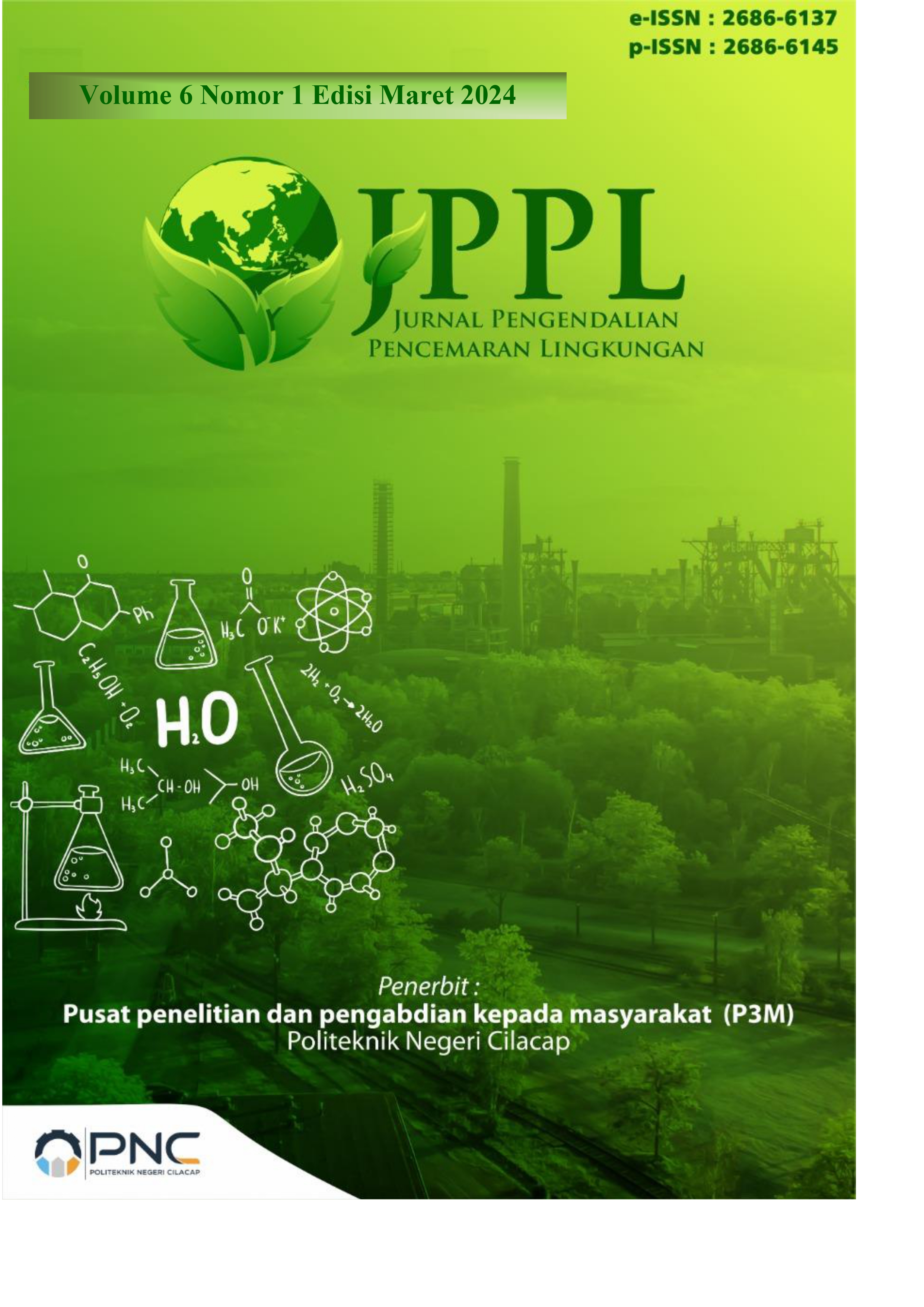Potensi Tanaman Sangitan (Sambucus javanica) sebagai Fitoremediator Tanah Tercemar Logam Berat Zn dari Air Limbah Industri Pelapisan Logam
 Abstract views: 356
,
Abstract views: 356
,
 pdf downloads: 455
pdf downloads: 455
Abstract
Phytoremediation is an alternative biological treatment that can be used to reduce soil or water pollutants. Phytoremediation has the advantage of environmentally friendly waste products and a lower budget compared to physical and chemical processes. In addition, phytoremediation has the weakness of long contaminant absorption times, and quite a few plants that are used as phytoremediation agents die because they are unable to survive the high concentrations of heavy metals contained in polluted media. This study aims to determine the ability of the S. javanica (S. javanica) plant as a phytoremediator for soil contaminated with the heavy metal Zn from industrial wastewater. Phytoremediation lasted for 10 days by contacting artificial Zn wastewater with a concentration of 5 mg/L and as much as 50 ml/day on the test plants. The planting medium used was 100% soil (A1) and 50% homogenized soil with 50% manure (A2). Tests were carried out on each part of the plant and growing medium with contact times of 0, 5, and 10 days of phytoremediation. The plant used as a phytoremediator is Sangitan (S. javanica). The optimum contact time in this study occurred on the 10th day of phytoremediation, and the addition of a 50% dose of organic matter in manure had an effect on the concentration of the heavy metal Zn. The accumulation of heavy metal Zn in plant leaves was greater than in roots, with an average BCF of 0.694 for leaves and 0.308 for roots. While the TF value > 1 represents that the Sangitan plant (S. javanica) has the potential to be a phytoremediator and has a high ability to translocate the heavy metal Zn.
Copyright (c) 2024 Kania Salsabilah Nur Rifanda, Ahmad Erlan Afiuddin, Tanti Utami Dewi

This work is licensed under a Creative Commons Attribution 4.0 International License.

















